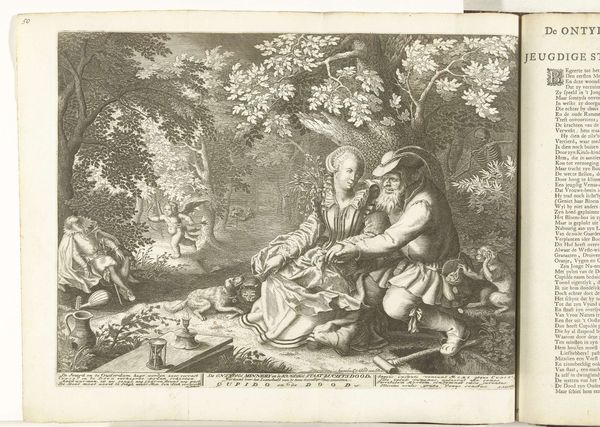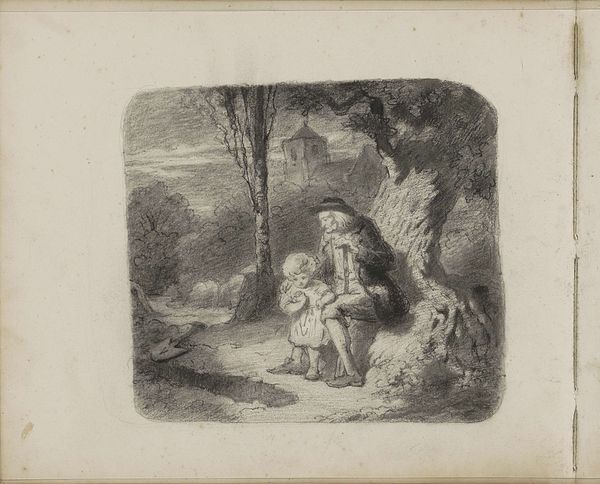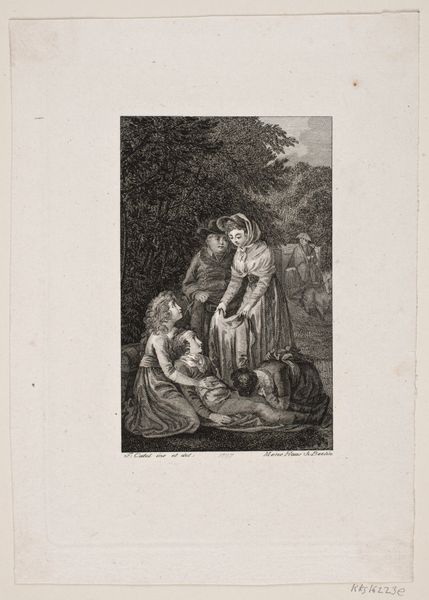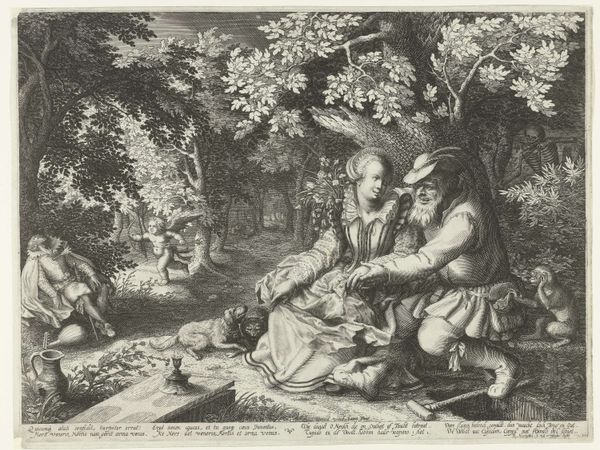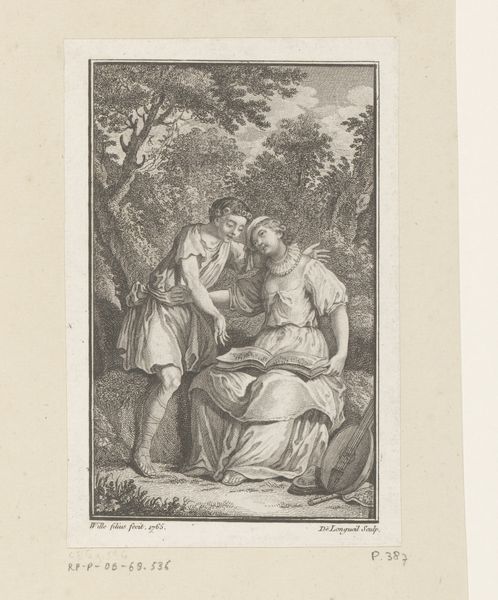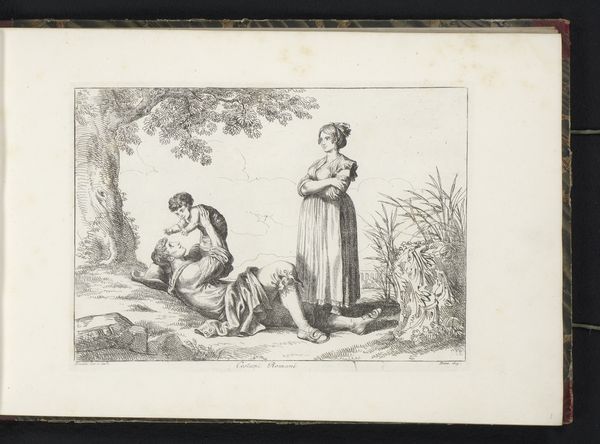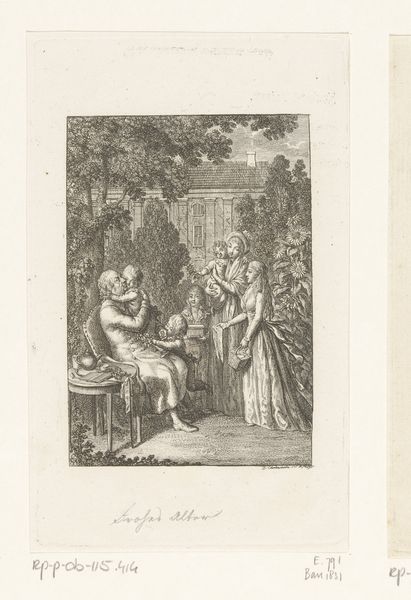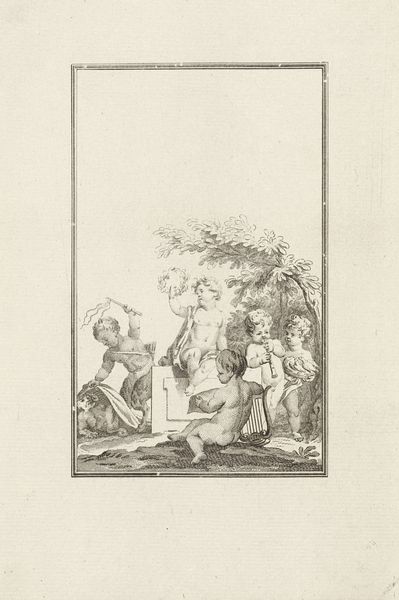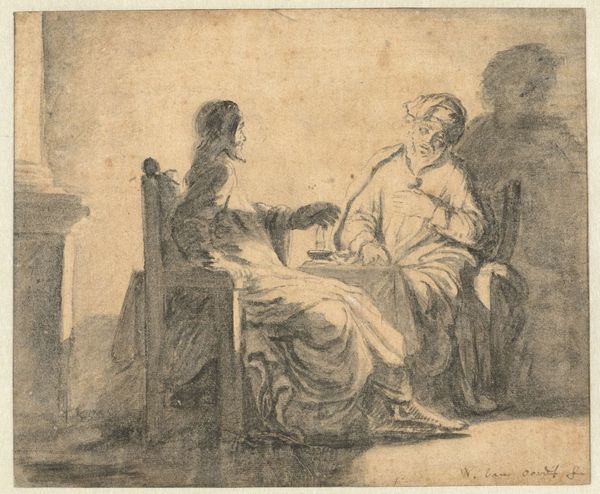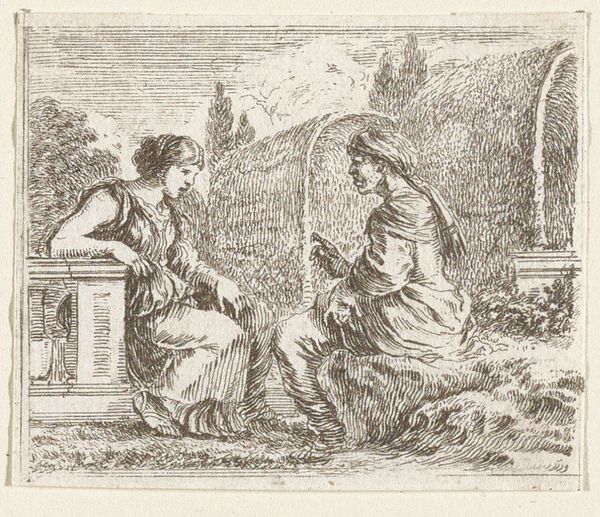
Dimensions: height 87 mm, width 106 mm
Copyright: Rijks Museum: Open Domain
This print, made by Derk Anthony van de Wart in the late 18th century, is an etching. This method involves coating a metal plate with wax, drawing through it with a needle, and then bathing the plate in acid, which bites away the exposed lines. Here, the etching method beautifully captures a pastoral scene. We see a shepherd and shepherdess, evoking a simple life close to nature. But don't let the apparent ease fool you. Etching requires immense skill and control. The varying depths and densities of line suggest the artist’s careful manipulation of the acid bath to achieve different tonal effects. Look closely, and you'll see a sophisticated interplay of light and shadow, created through the strategic use of line. Etching emerged alongside the rise of print culture, making art more accessible to a wider audience. It bridges the gap between fine art and craft. The artist’s hand is evident in every line, but the process also involves technical expertise. In the end, the resulting image is a product of both artistic vision and skilled labor.
Comments
No comments
Be the first to comment and join the conversation on the ultimate creative platform.
